Day 4 (5-Feb-2019) ... cont.
We had our coffee at 3:45 and started our first safari in Mara. There were lot of clouds and the light was very low for photography (this became the feature of every evening and on 2 days it even rained).
We started at 4 as planned. Our guides for next 4 days was Edward and was helped by Joel. They both preferred to wear their traditional outfits which seemed to be the norm in the Porini Cheetah Camp.
Just outside the camp we could see the Wildebeests (some small babies too) and other antelopes roaming freely. We even noticed a lot of vultures around (we had seen them in Samburu too, but not in this big numbers).
In general there was abundant wildlife on display here. I could take photo of the Dik-dik with its cute little horns. We saw the Masai Giraffe seating on the ground (so far those we had seen were almost always standing or running). Little further, a lovely Giraffe family was welcoming us with an amused look.
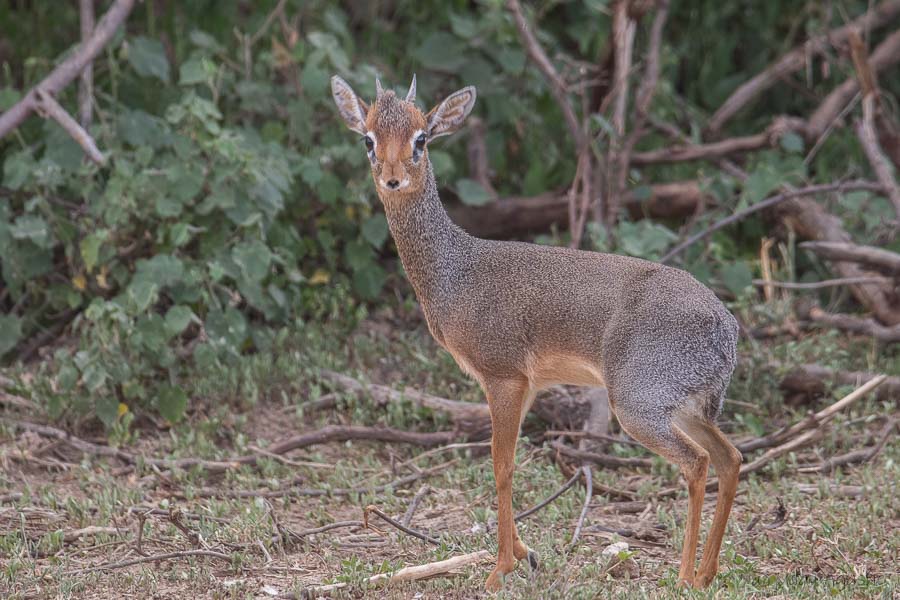
Dik-dik
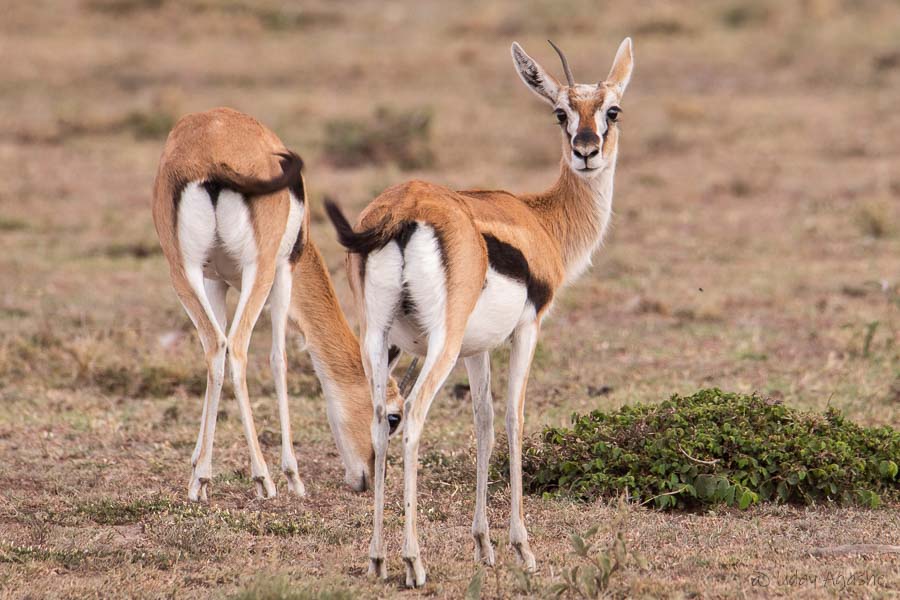
Thomson's Gazelle

Giraffe sitting
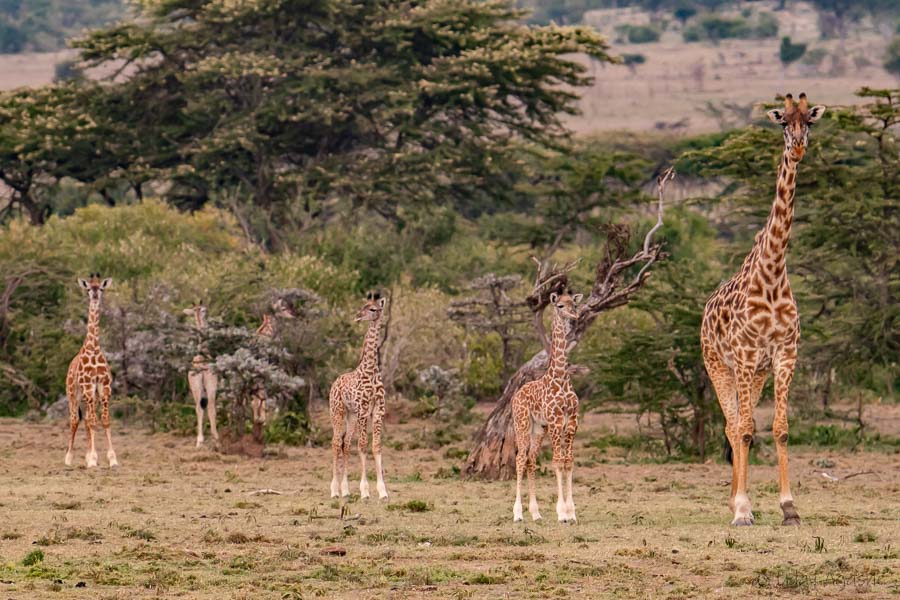
Giraffe family
In Samburu, we had seen lot of antelope verities but here on day 1, we could see the “Topi” and the “Eland”. Yes, that is what they are called. Both are large in size and heavier compared to the other antelopes like impalas and gazelles.
Topi has distinct hump at the back of neck, reddish-brown body with purple patches on the upper legs (as they are wearing short Jeans). They can weigh upto even 160kgs. “Common Eland” is even bigger, average weight for males being 500-600 kgs, they have steady spiral horns.

Topi with baby
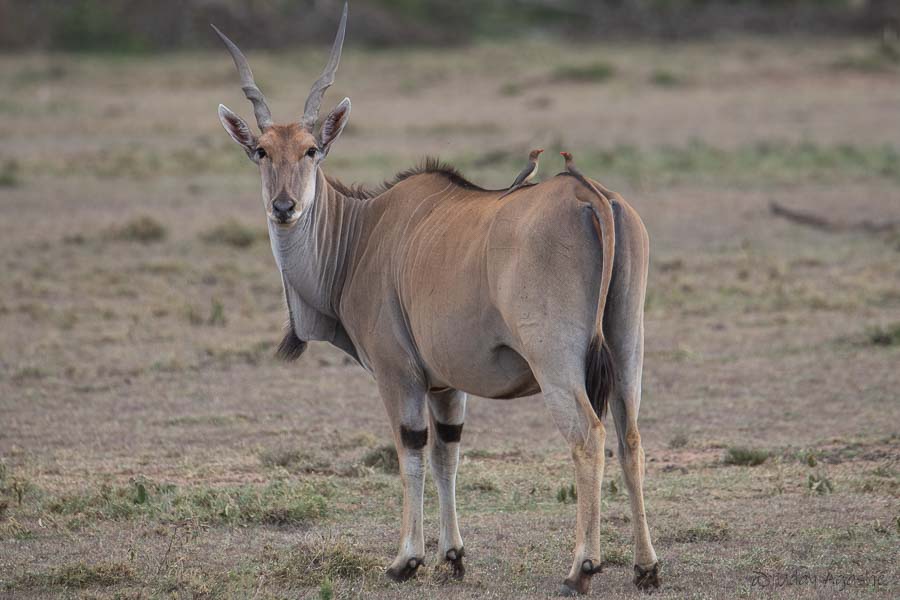
Eland
As I mentioned earlier the light was low but we couldn’t stop clicking whatever pictures possible of the fabulous species diversity here. To name a few, we saw “Long-crested Eagle”, the “Lilac-breasted Roller”, “Little bee-eater”, “Double-banded Courser”, “Temminck's courser”, the ugly looking “Marabou Stork”, “Ruppel’s Griffon Vulture” (it seems this vulture can fly at the height of 37000 feet), the list goes on and on…
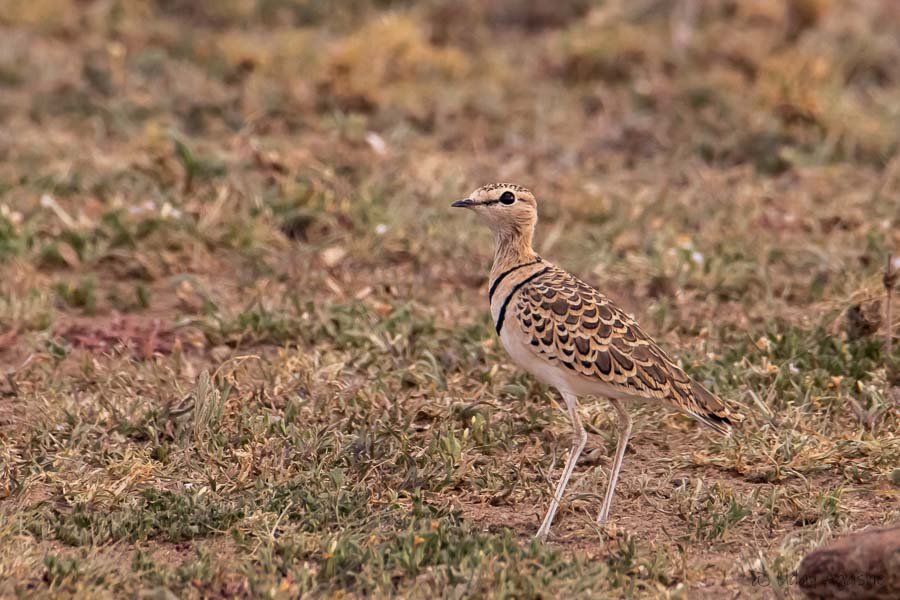
Double-banded Courser
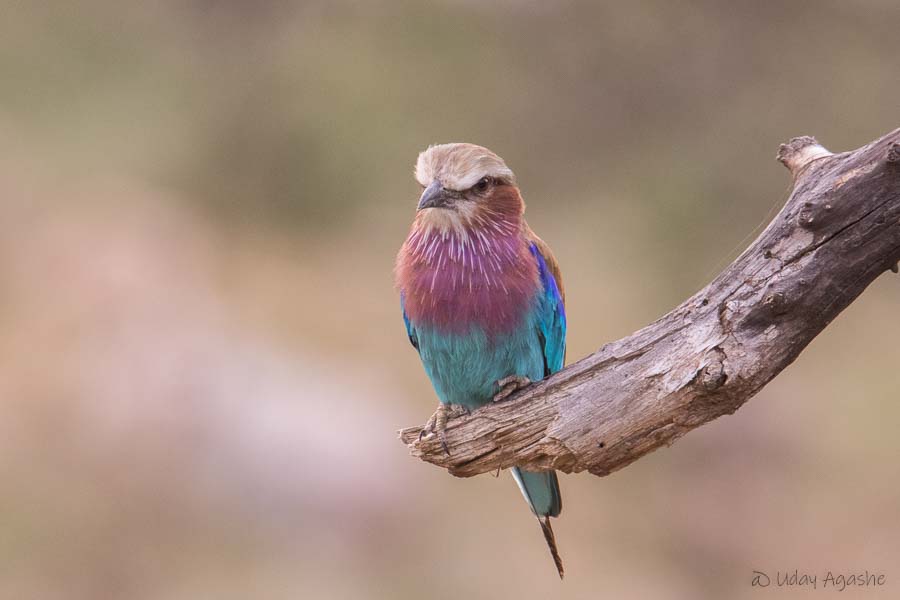
Lilac-breasted Roller
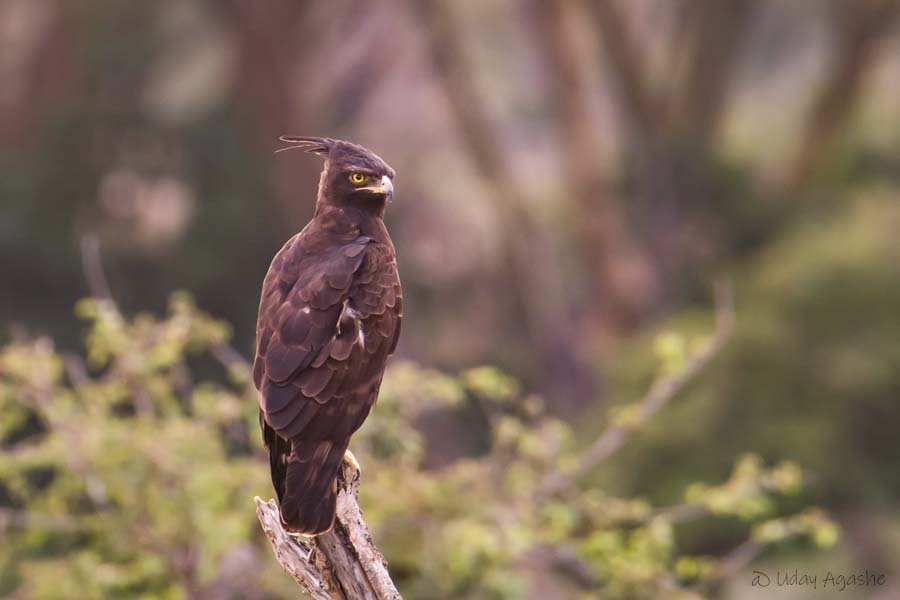
Long-crested Eagle

Marabou Stork
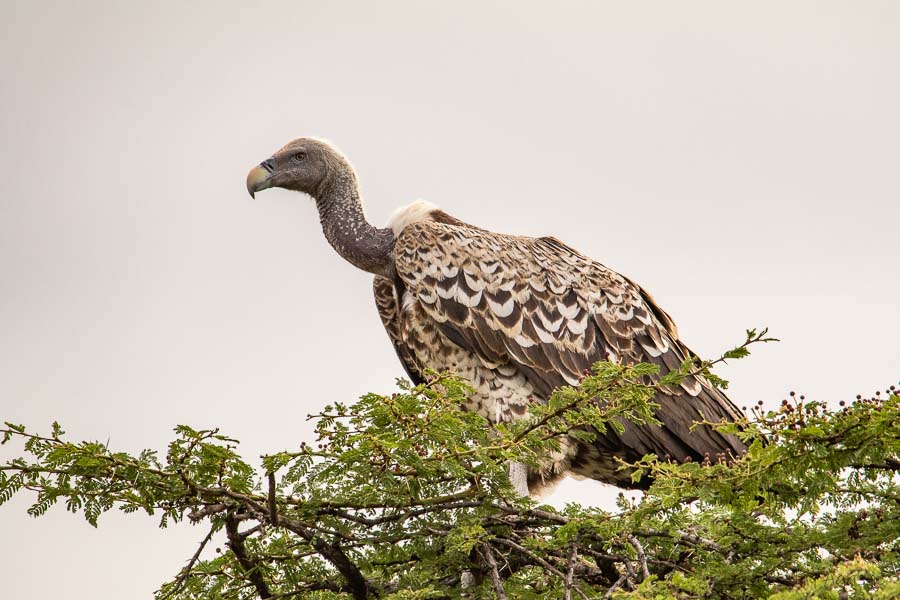
Ruppel's Griffon Vulture
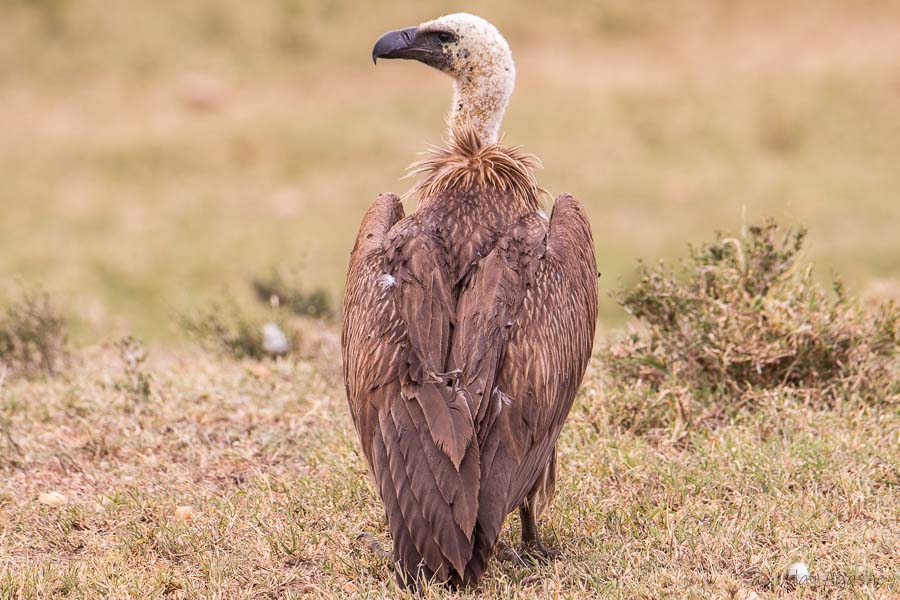
African white-backed Vulture
At one point, we saw a few vultures on the ground and also some jackals, these were obvious signs that there must be some kill nearby. They had congregated close to a river bank (but the river was hidden because of deep bushes and tall trees) and Yuwaraj could sense that the kill must be near the opposite side of the river. We asked Edward to drive us to that area as our hunch was very strong, he agreed immediately (later at night we realized that Edward was already aware of what is to be found there). Although there was not much water in the river-bed, the trench was too dip to drive through. We had to take a long circuitous route to reach there.
We probably took about half hour to reach there but exactly at the spot Yuwaraj had imagined there was a huge carcass of maasai giraffe, was killed probably a day or 2 before. The vultures were feasting on it, there were just so many of them. The lappet faced and Griffons were probably high up in the pecking order and were getting preference over others.
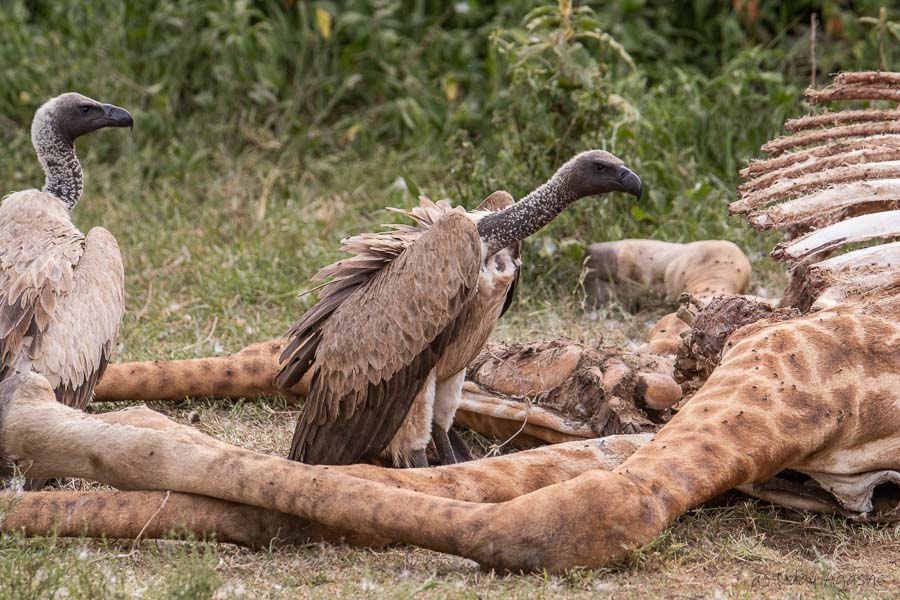
Vultures on giraffe-kill

Wing-span
Coming to Africa, I was keen on watching the vultures. Recently as part of my “Basic Ornithology course”, I had missed photographing the vultures and here I did not want to miss out. That wish got fulfilled very easily. Here they were abundant and omnipresent.
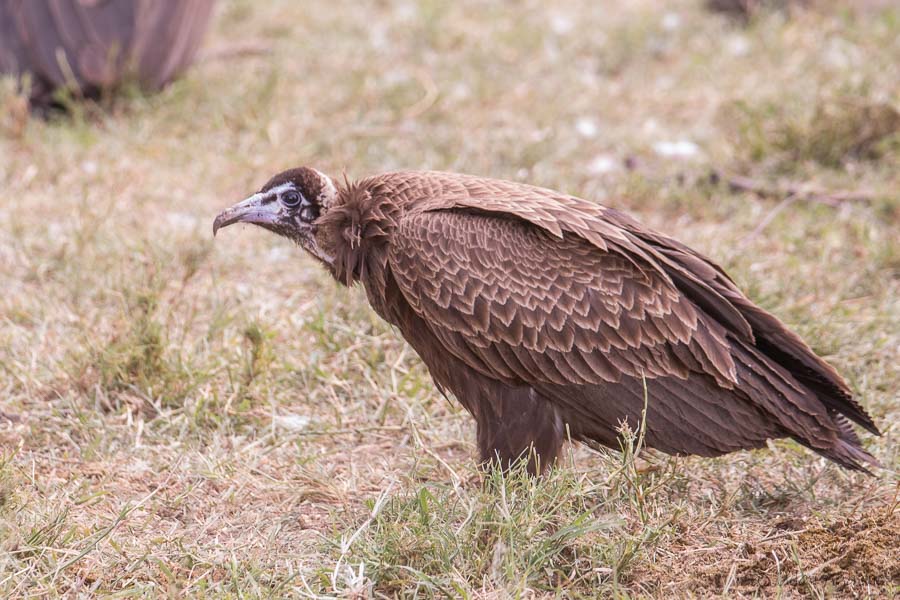
Hooded Vulture
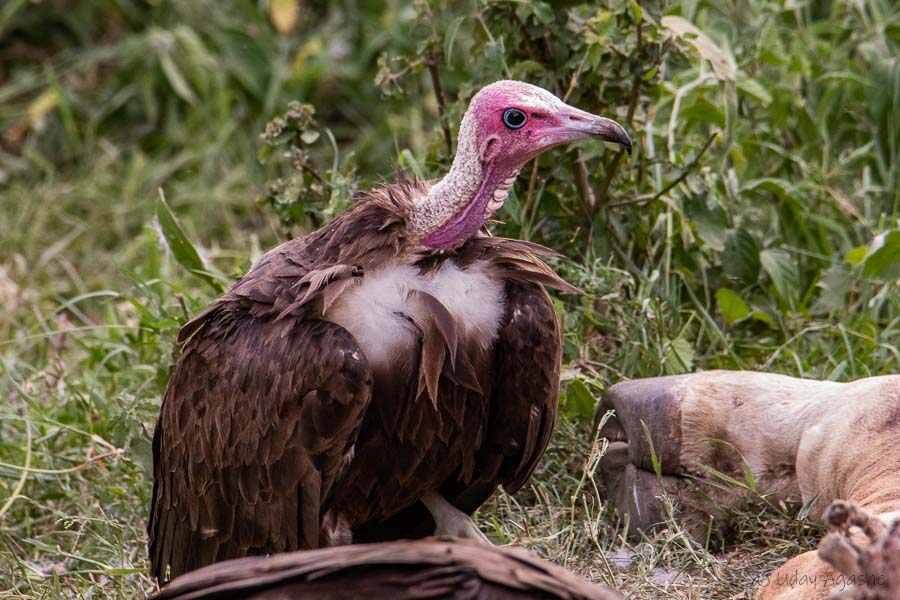
Lappet-faced Vulture
We spent about 15-20 minutes there, by the way the ladies had already started complaining about the foul smell (what else would you expect near a carcass that was probably couple of days old).
Moving just a little bit further, we stumbled upon a resting lion pride. They were not even 100 meters away when we were clicking the vultures. Considering that the light was reducing rapidly, we would have liked to capture the lion pride any day over the vultures!
The male lions were not seen but it was fun capturing the pride, completely relaxed (probably they had devoured major portion of the giraffe sometime back). Very soon the cubs got into action and started disturbing the elders one-by-one, giving us some wonderful shots.
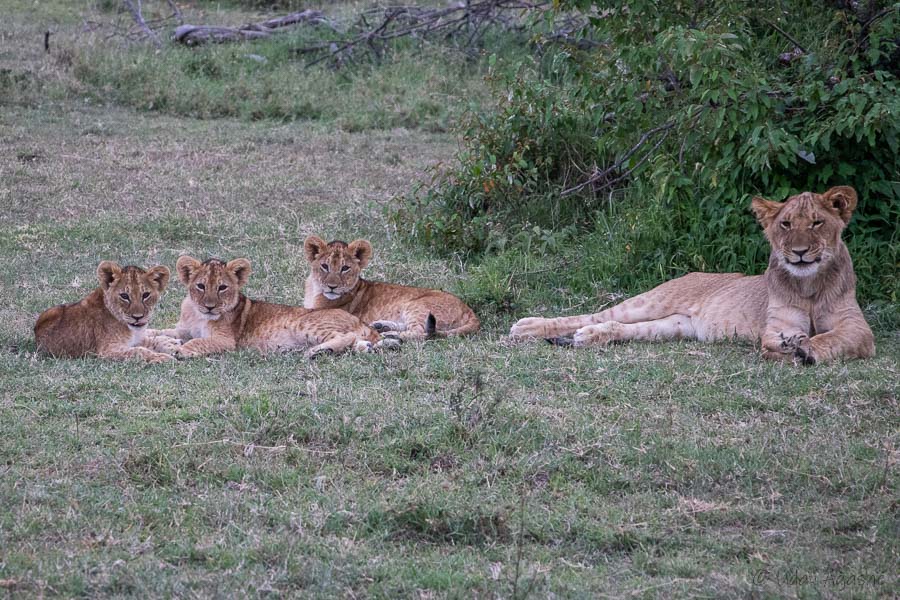
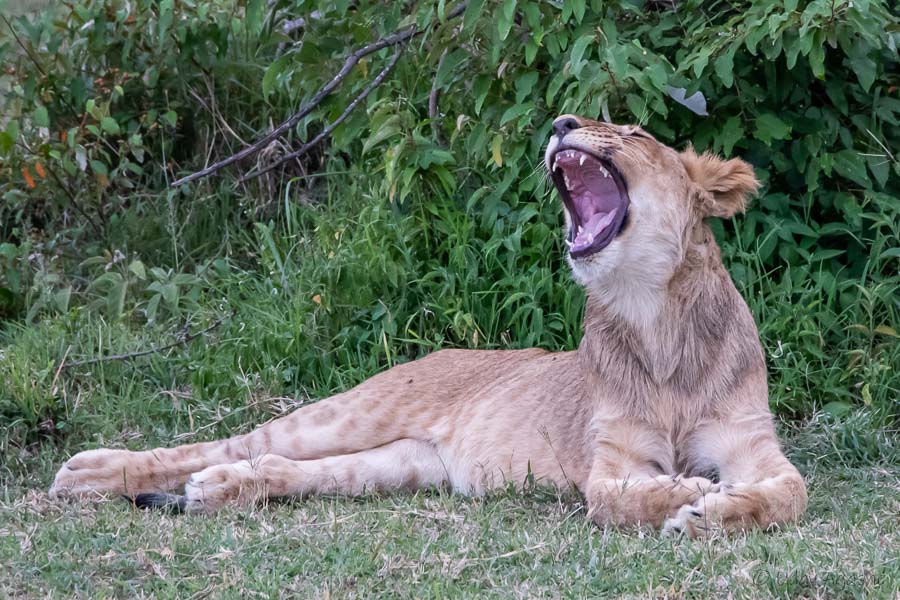
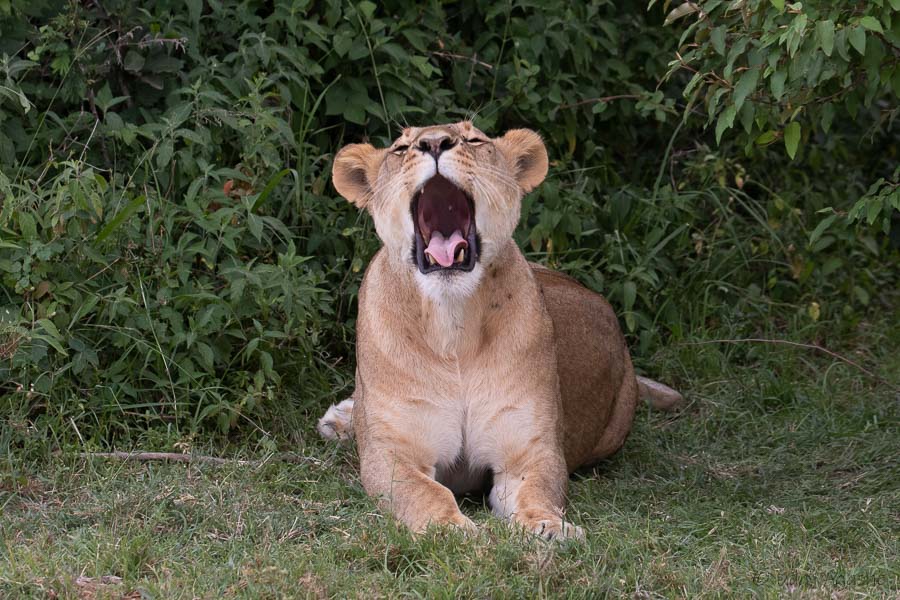

This went on for more than 30 minutes. Edward then suggested we search for the male lions. Typically they would be somewhere nearby but may not come out into the open. The search wasn’t for long, we had seen one other vehicle that had stopped about 50 meters away (we actually though they are missing this pride action) and they were clicking the 2 male lions of that pride. Here the light had reduced further but it was too good to miss them. We later learnt that this is the Lemuny pride (one of 2 resident prides of this conservancy) and it included 3 male lions (brothers). The 3rd one was probably wandering around (due to the high number of wildebeests, the area attracted stray lions and he had probably seen a potential mate in them).


Now was the time for sun-downers. This was something new at least for me. Before starting for the evening safari, our hosts had enquired about our drink preferences (most of us being teetotallers, it was mix of soft drinks). Every evening, the guides took us to a spot which was relatively safe to get down (a plain at certain height so that all the surroundings are clearly visible), and we had our snacks, soft-drinks right inside the jungle.
This is how we had the sundowners normally but on the first day, we did not get down from the vehicle and had our snacks/drinks inside while watching the lion pride.
The Sun was about to set and the horizon was beautifully decorated. By the time we finished the snacks, it was very dark and we straightaway headed for our camp.
Just before the camp, we were asked for our shower needs (we all preferred to have baths in the evening on most days after safari). The camp as I said earlier is eco-friendly and they utilize water resources judicially. So the shower was with exact 20 liters of water (made comfortably lukewarm).
Dinner was at 8. We were not allowed to venture out of our tents after dark and there were escorts outside each tent at that time who would guide us to the dinner-tent; needless to say, they would accompany us back after dinner too. The food was delicious and the spread was good too.
We reached our rooms by about 9 (after meal plus nice round of discussion about who the day went) and thought of hitting the bed immediately. To our surprise, they had inserted hot-water bags on the bed (while we were out for dinner), it was so comforting after the bumpy safari rides of the day.
Day 5 (6-Feb-2019)
Day start was at 6am, contrary to Samburu, here in Ol Kinyei, we carried packed breakfast with us. The breakfast arrangements were very elaborate. Although we used to have it inside the jungle, the breakfast spread was always very good, we had folding tables/chairs as well (but we sometimes preferred to sit on the lawn/ground).
It was dark when we started but that gave us opportunity to reach far off places when the Sun was just coming out. As the day was breaking, we spotted a Hyena with blood-soaked face (probably had a nice meal earlier in the night). This morning we saw another lion pride, they had probably consumed a wildebeest in the night and its remains had now attracted the vultures as well as the black-backed Jackals.

Vultures
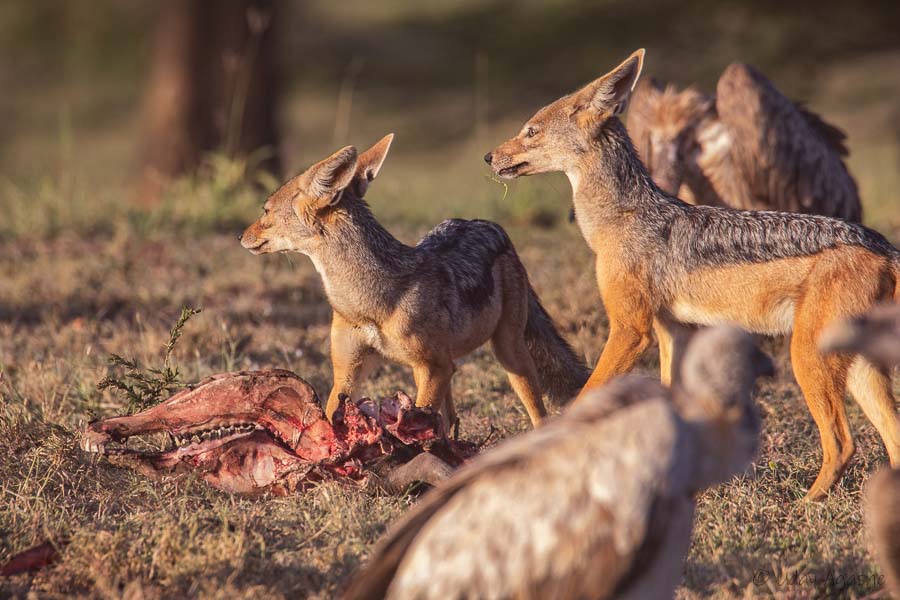
Black-backed Jackals
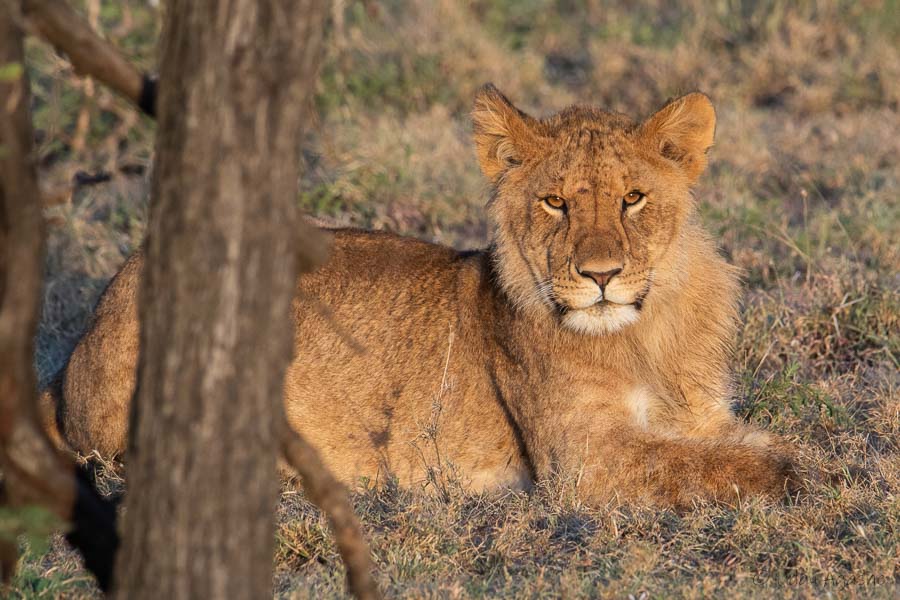
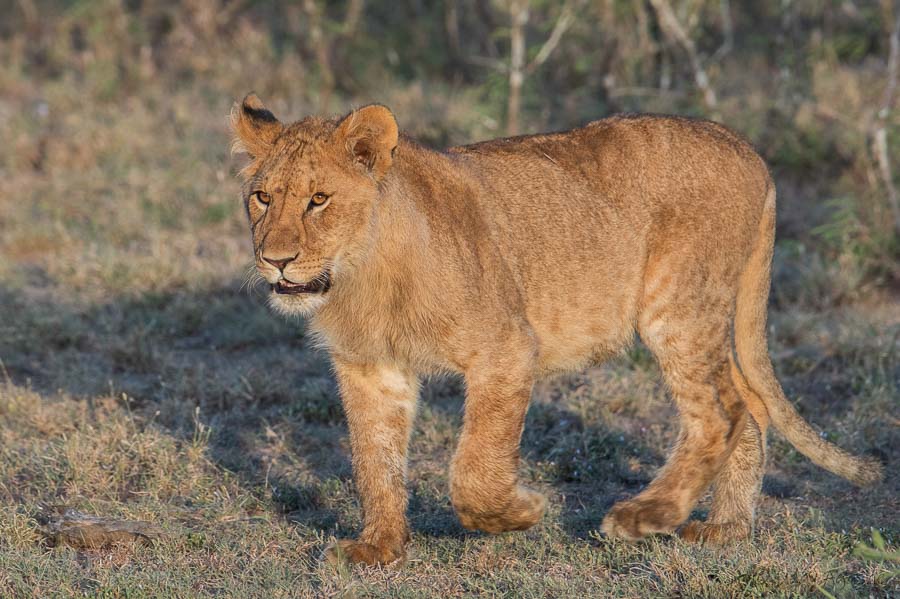
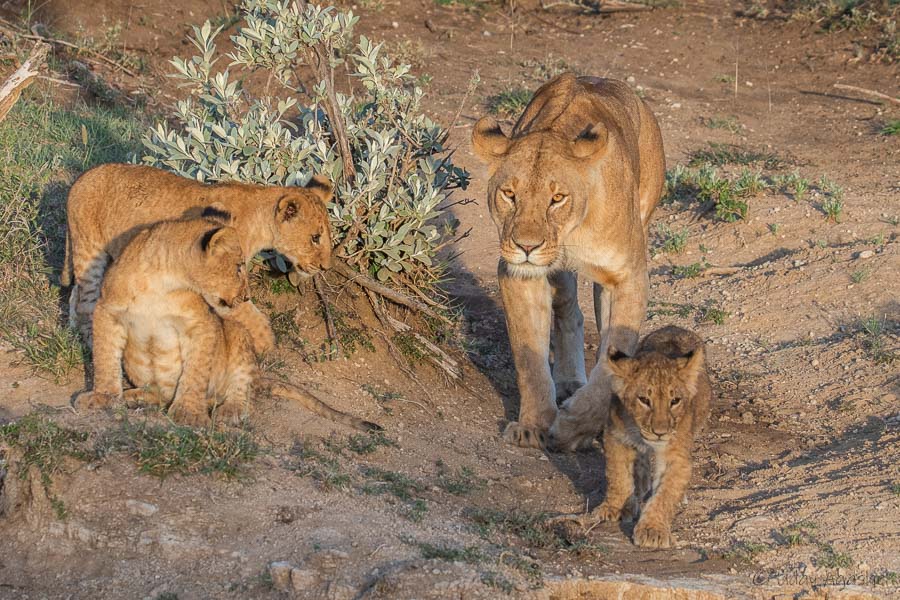
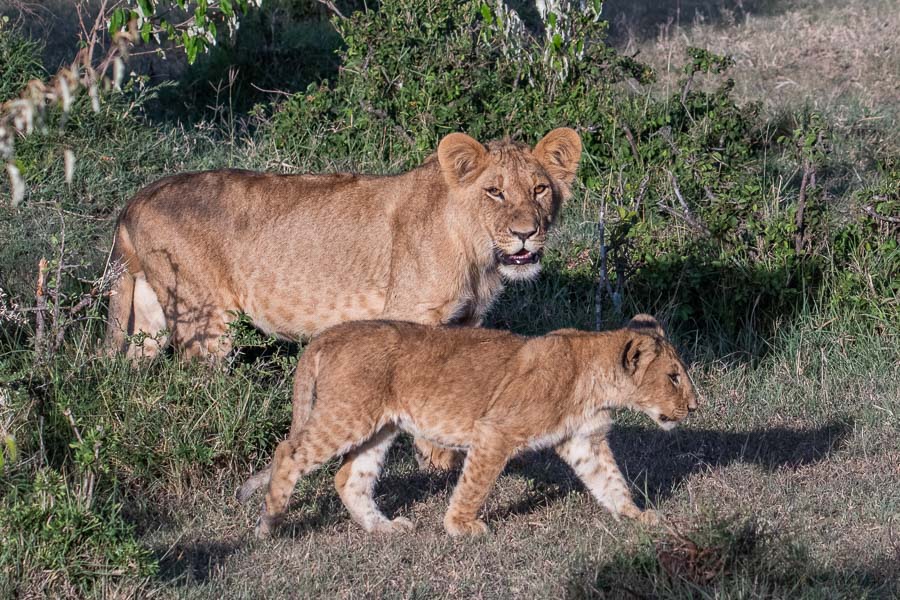
The nearby area had many bird varieties as well.

Steppe Eagle
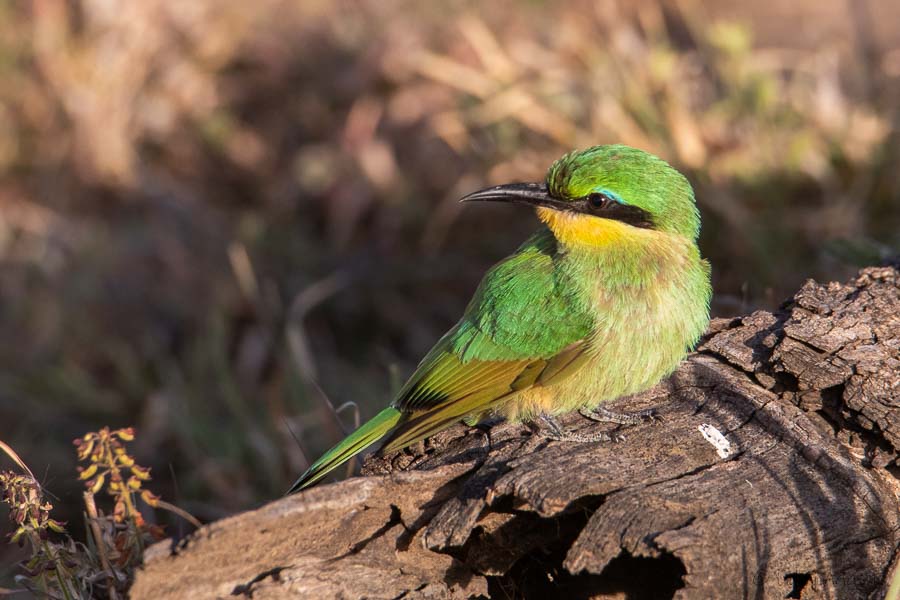
Small Bee-eater
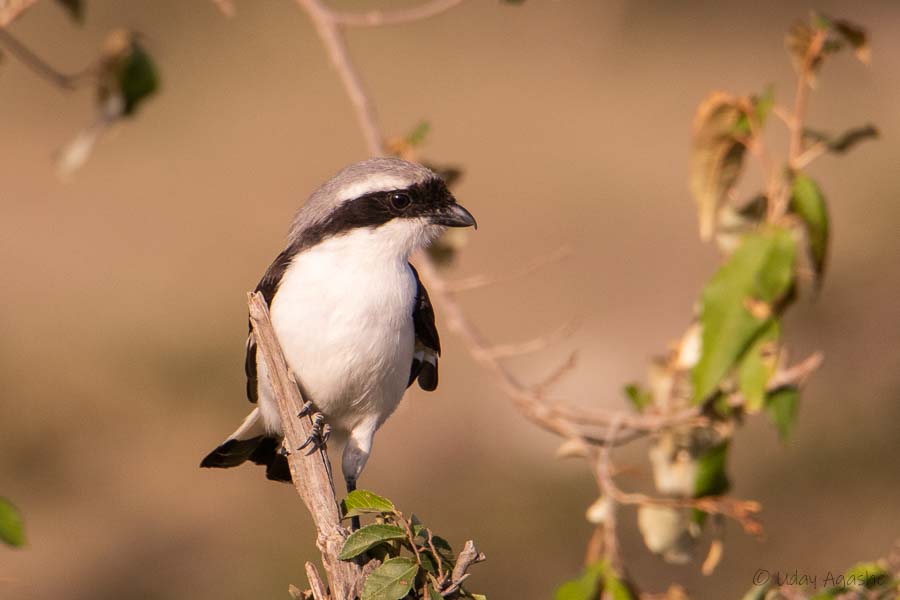
African Shrike

Ruppel’s Starling
We moved from there after lot many clicks as there was just so much variety that morning. As we moved further, we saw a lone hyena with part of the horn of some prey. Probably there were a few meat pieces nearby as two vultures were on the ground, waiting for their opportunity.
It was about 8:30 by then, time for breakfast. We went near the airstrip for the stop, and while we were there I managed to see a few birds on nearby tree. It was the scarlet-chested sunbird. It was a pair and both were mostly hiding between the leaves, but did gave us a few chance to get them in clear view
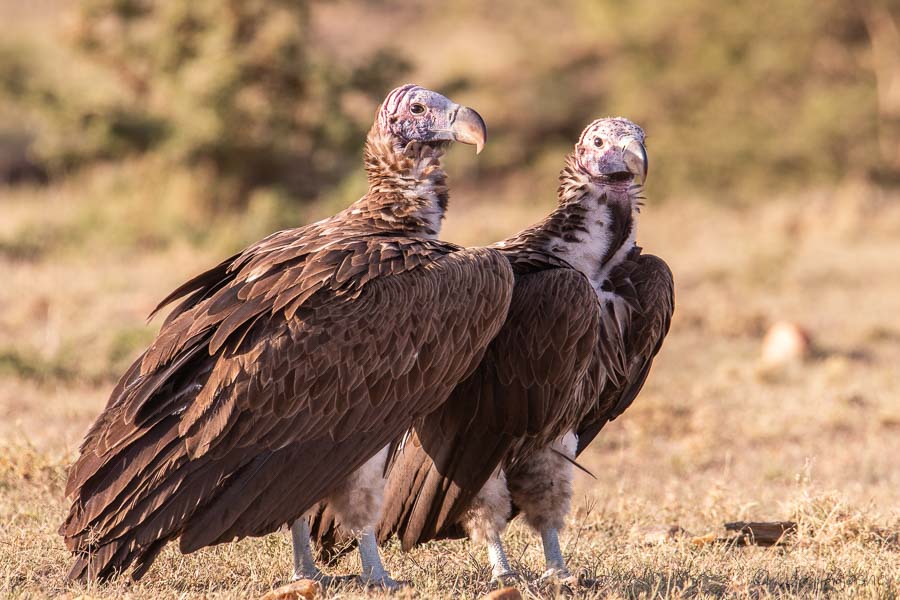
Waiting Vultures

Hyena with horn
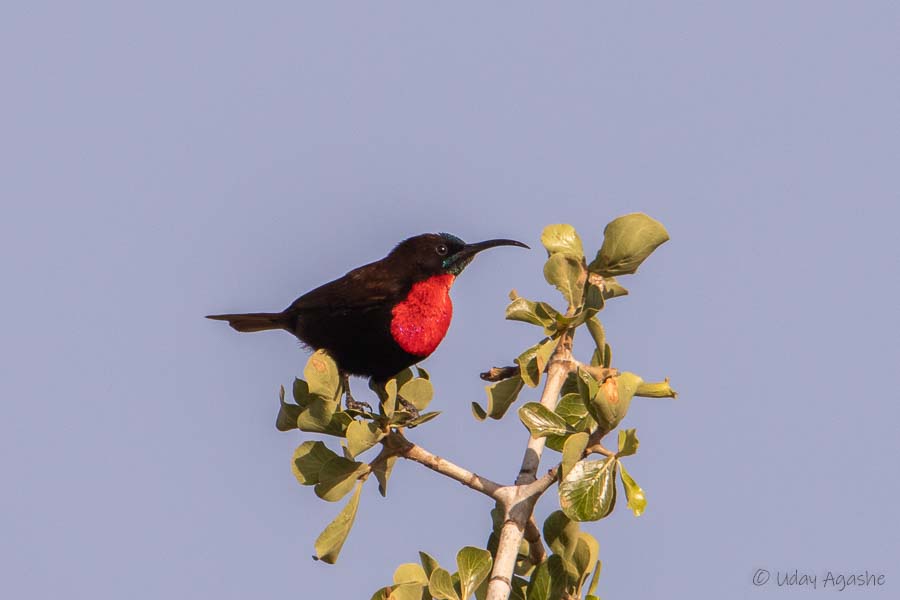
Scarlet-chested sunbird
As we were having our breakfast, Edward got some chatter on the radio. Apparently a leopard has been sighted by few guys and it was hiding in a little trench surrounded by dense bushes. We quickly finished our snacks and went right in that direction.
Leopard was not to be seen although we waited sufficiently (and even made rounds around the trench to observe the area from all sides). In that area, we did see a few new birds.
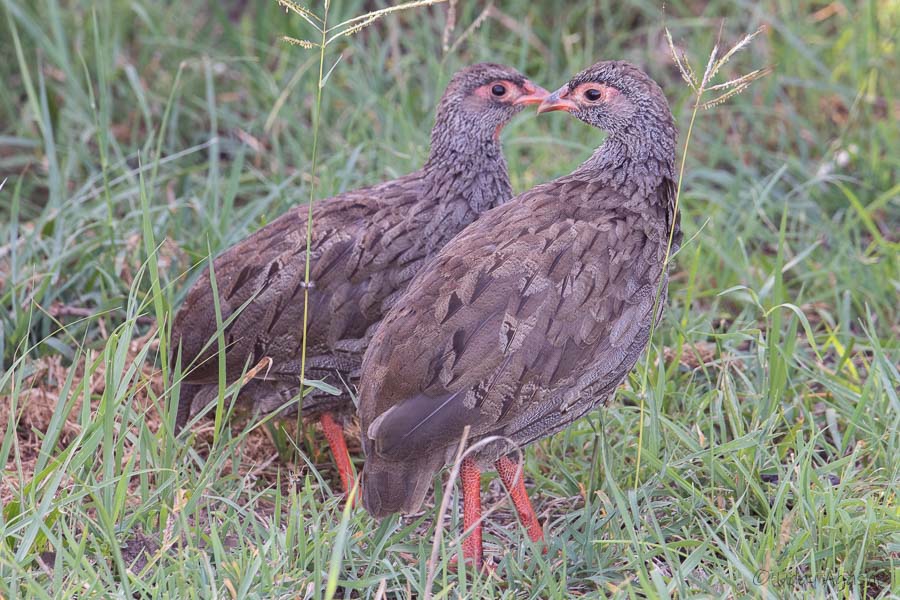
Red-necked spurfowl

White-browed Coucal
In search of the leopard we had come very far from our camp and decided to head back in that direction. Although we did not see any big-cats on the way, there were so many birds (Pipits, white-crowned shrike, Temminck's coursers, etc.) we could see. We also saw the rock-agama (type of a garden lizard that is brightly colored) and multitude of antelopes, some giraffes made their presence felt too.
But our safari was still not done, on the way back we came across another Cheetah family, having their afternoon siesta.
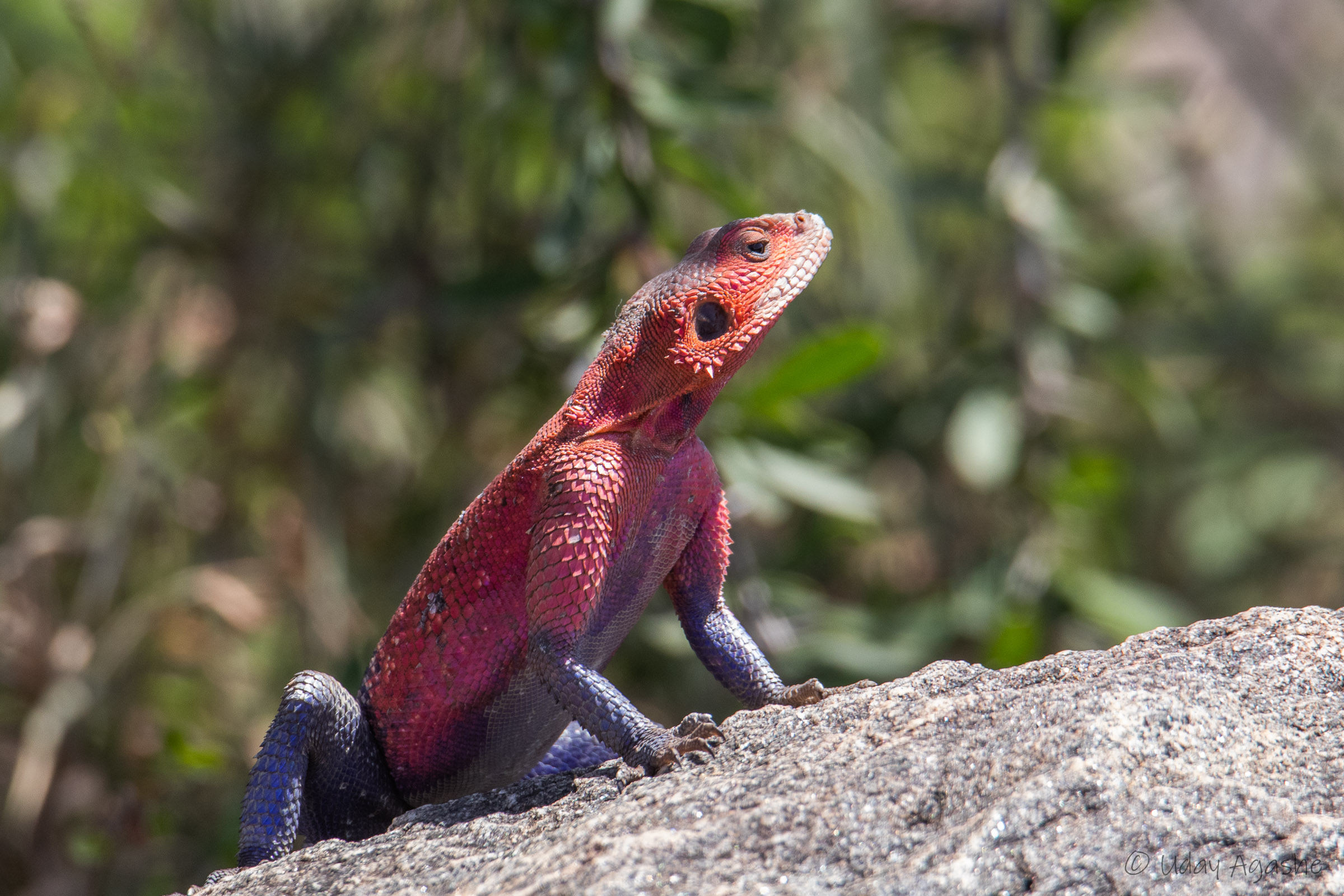
Blue Rock-agama

Masai Giraffe

Resting Cheetah family
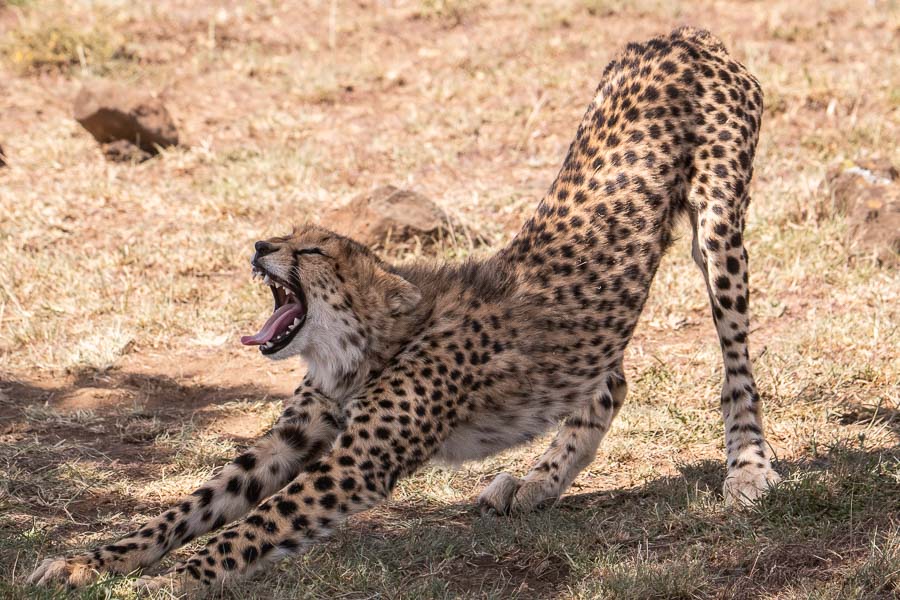
Stretching Cheetah
It was noon by the time we reached the camp, we had spent 6 full hours in that safari and what a day it was. So many unforgettable moments. Afternoon safari was at 4, so we had some time after lunch to relax and also charge the camera batteries.
Yesterday we had cloudy evening and today was no different. We got just couple of hours till 6pm but even during that the light was very dull.
During the ride, we saw another family of warthogs. They have a peculiar habit of eating the grass on their knees. If you look at the photo below, the knee patch seems to be devoid of any hairs (it can also be seen that the knee is low down on the leg portion). We also saw a young wildebeest tagging along with mother. It can be seen that the juveniles are much fairer than their parents and the dark body coloration happens over their growing period. But the face is black even in the newborns. For the elder wildebeest only their beard color matches to that of the juvenile.

Warthog

Wildebeests
Normally we had seen the jackals to be very active, always on their toes looking for prey but here we saw one that was relaxing (and also watching us closely). We also saw a group of banded mongoose running at super speed. Whenever we spotted them, they were always in hurry. Their color matches very well with the dusty ground and it becomes very difficult to spot them, even they are in sizeable numbers. This one here decided to stand guard and watch the surroundings. It remained that way only for few seconds though.
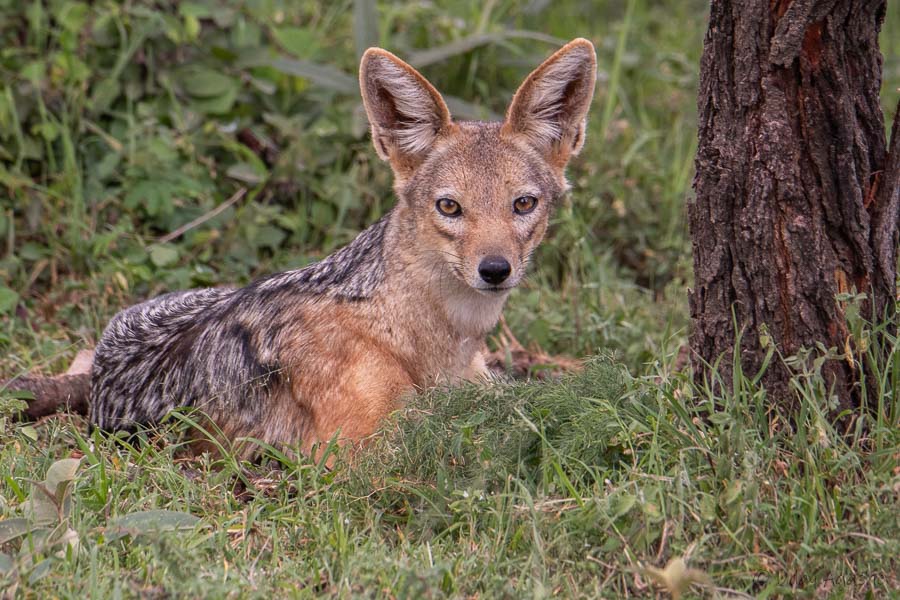
Jackal
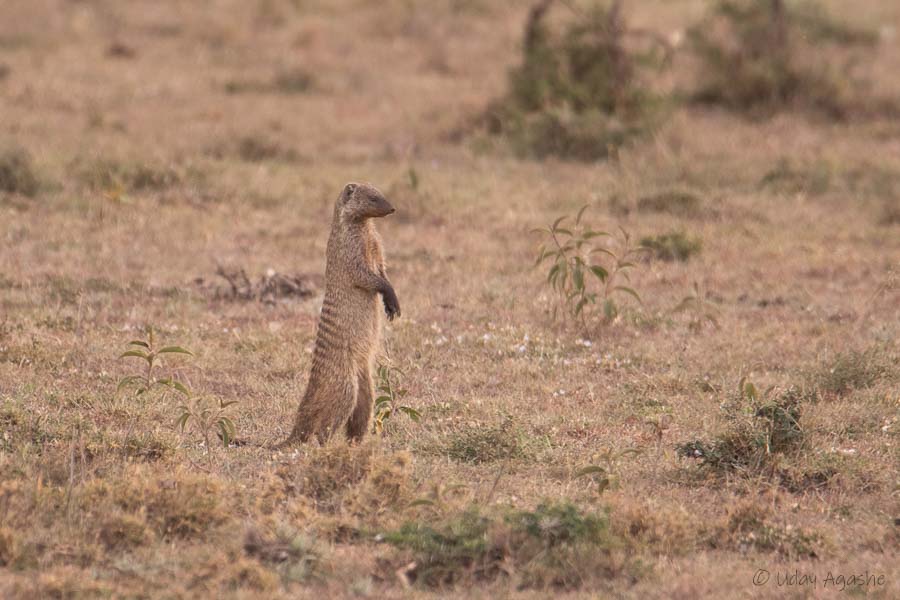
Banded mongoose
Today we saw a leopard-tortoise in the jungle. I was little amazed to see how it reached that spot, there was absolutely no water nearby. Where does it stay, what does it eat, too many questions. On a tree nearby there were 2 eagles together.
As the day was ending, we saw one big Elephant herd from close distance. Some of them were having a dust bath. It is a fascinating experience to watch them so close. To tell you frankly, it is also little frightening. What if they decide to charge at us, we hardly have any defense against their might! Yes, we are in a vehicle, but this is not a normal road. It is next to impossible to back-up our vehicle in that terrain. But the guides normally understand the elephant’s behavior and have some idea when they are calm and when they could be agitated. Fortunately, their instincts worked that day!
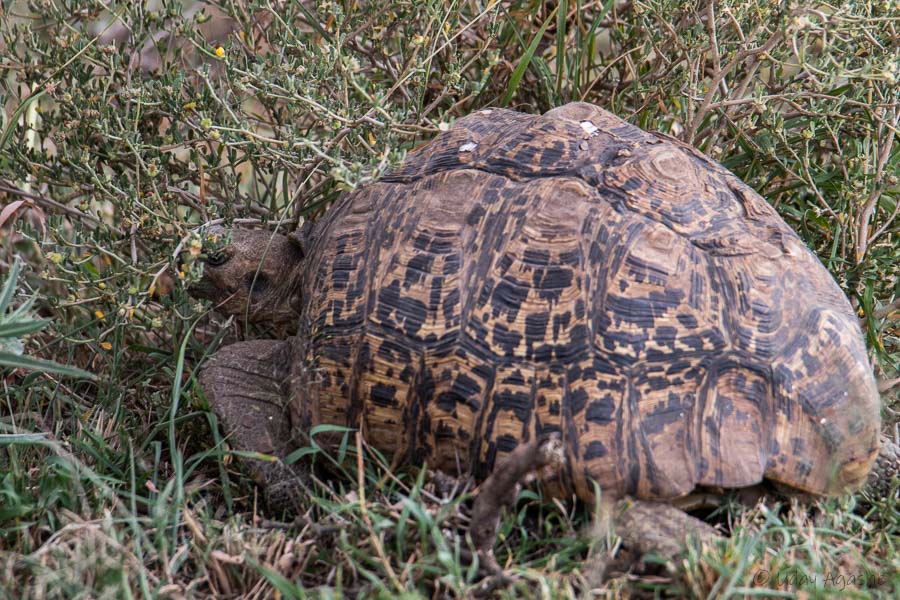
Leopard turtle
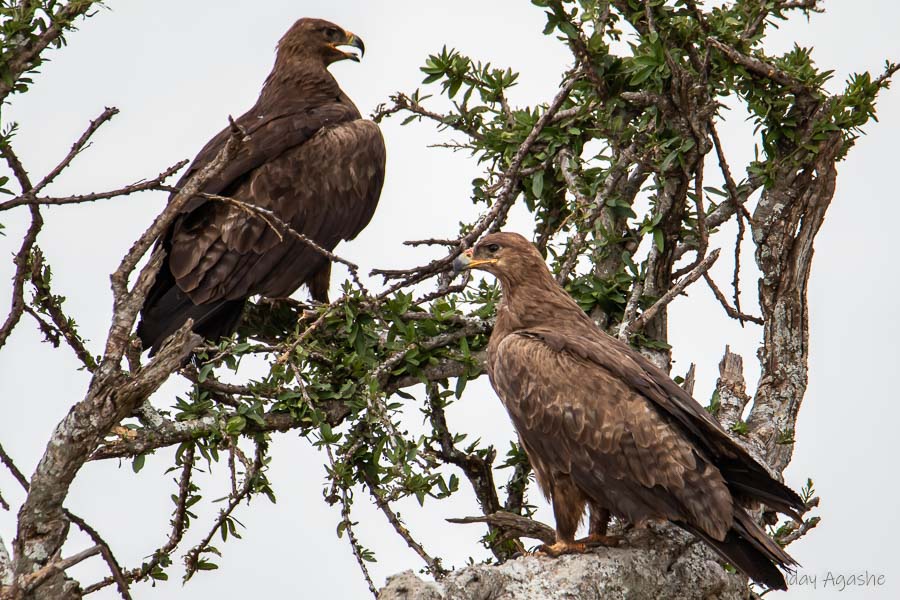
Tawny Eagles

Elephant herd

Dust Bath
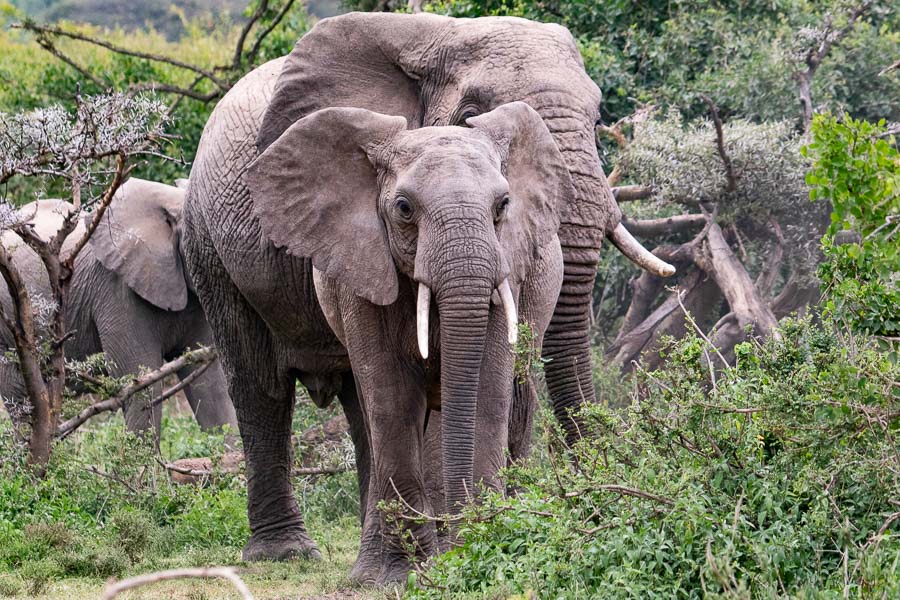
Elephant herd
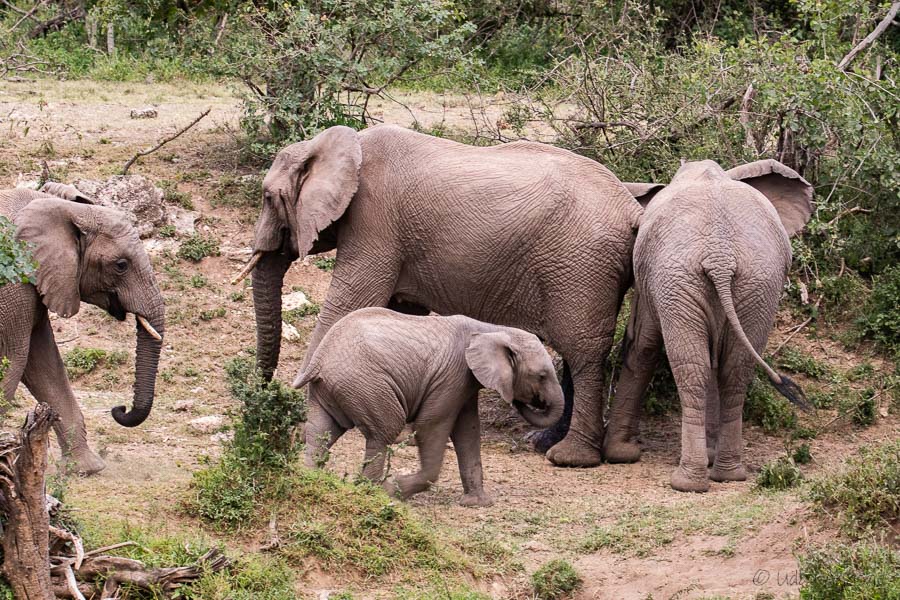
Elephant herd
Today’s sundowners were in a safe location in the jungle. The Sun was setting on the horizon giving us lovely silhouettes of the passing animals.
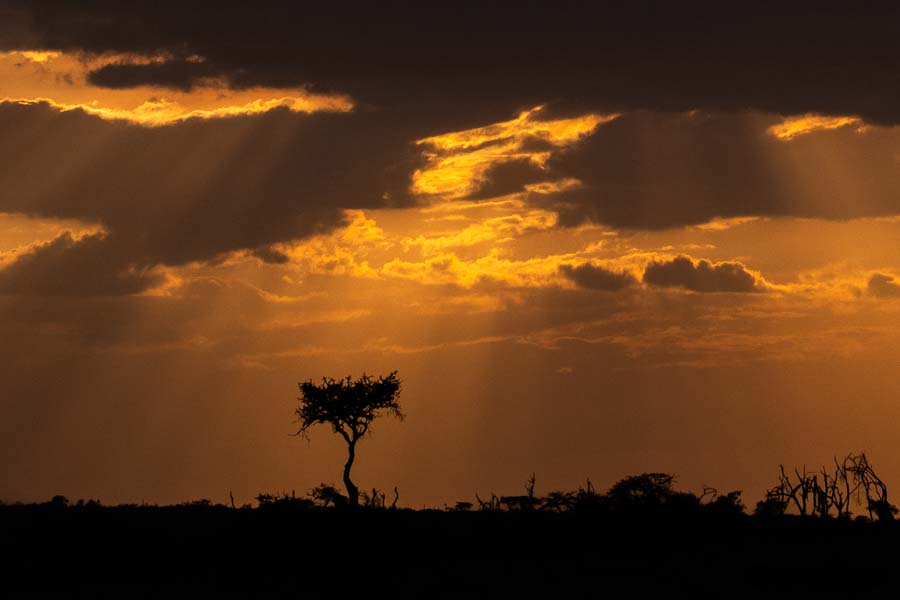
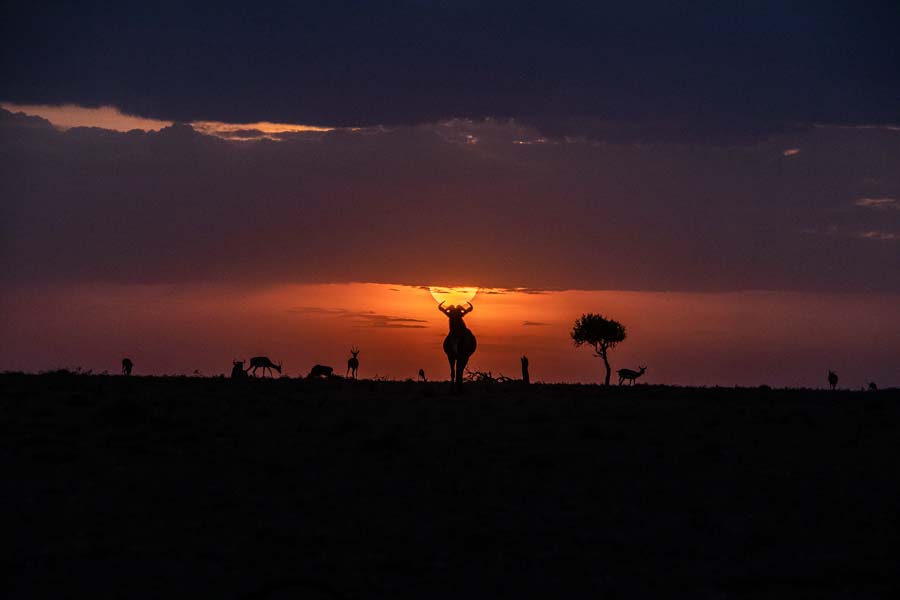
After snacks, we headed back to the camp. That was another super-duper day in Masai Mara.